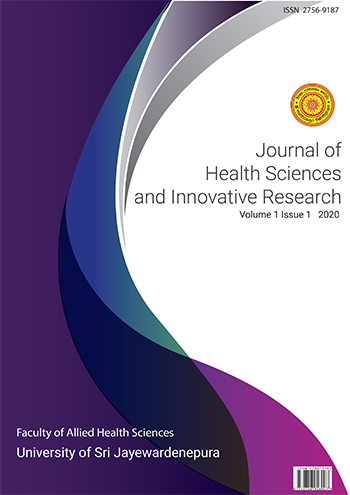Knowledge, Perceptions and Practices on Modified Release Tablets among Prescribers: A Preliminary Study
DOI:
https://doi.org/10.31357/jhsir.v1i01.4769Abstract
Introduction: Modified release tablets (MRTs) are developed to achieve different therapeutic outcomes and are frequently prescribed. This study aims to evaluate the knowledge, perceptions and practices on using MRTs among a selected cohort of prescribers. Methods: A self administered online survey was conducted using a pre-validated questionnaire, prepared in-house to assess knowledge, perceptions and practices on using MRTs, among academics with an MBBS degree in medical faculties of State universities in Sri Lanka. Results: The response rate was 15.5% among 375 prescribers. Most were females (53.4%) and were 46-55 years (29.3%). Over 50% correctly expanded abbreviations related to MRTs. Most defined enteric coated (87.9%) and targeted release (77.6%) forms accurately. However, 87.0% mixed-up definitions of sustained release with controlled release. Most believed that inability to split tablets (70.7%) and high cost (70.7%), as disadvantages of MRTs. Nearly half did not identify the risk of dose dumping (53.5%) and inflexible dosing schedule (44.8%) as disadvantages. For frequency of administering MRTs, 86.2% referred the product information leaflet (PIL) while 29.0% depended on the frequency of the corresponding immediate release tablet. Most (79.3%) prescribed MRTs to increase patient compliance while 12.1% prescribed them to reduce cost. When problems regarding MRTs were encountered, most referred PILs (81.0%) and clarified with experts (75.9%). Conclusions: Although the response rate was low, a clear gap in knowledge, perceptions and practices on using MRTs were identified among prescribers who responded. Interventions are needed to improve the knowledge, perceptions, and practices on using MRTs among prescribers.
Keywords: Modified release tablets, Prescribers, Knowledge, Perceptions, Practices



